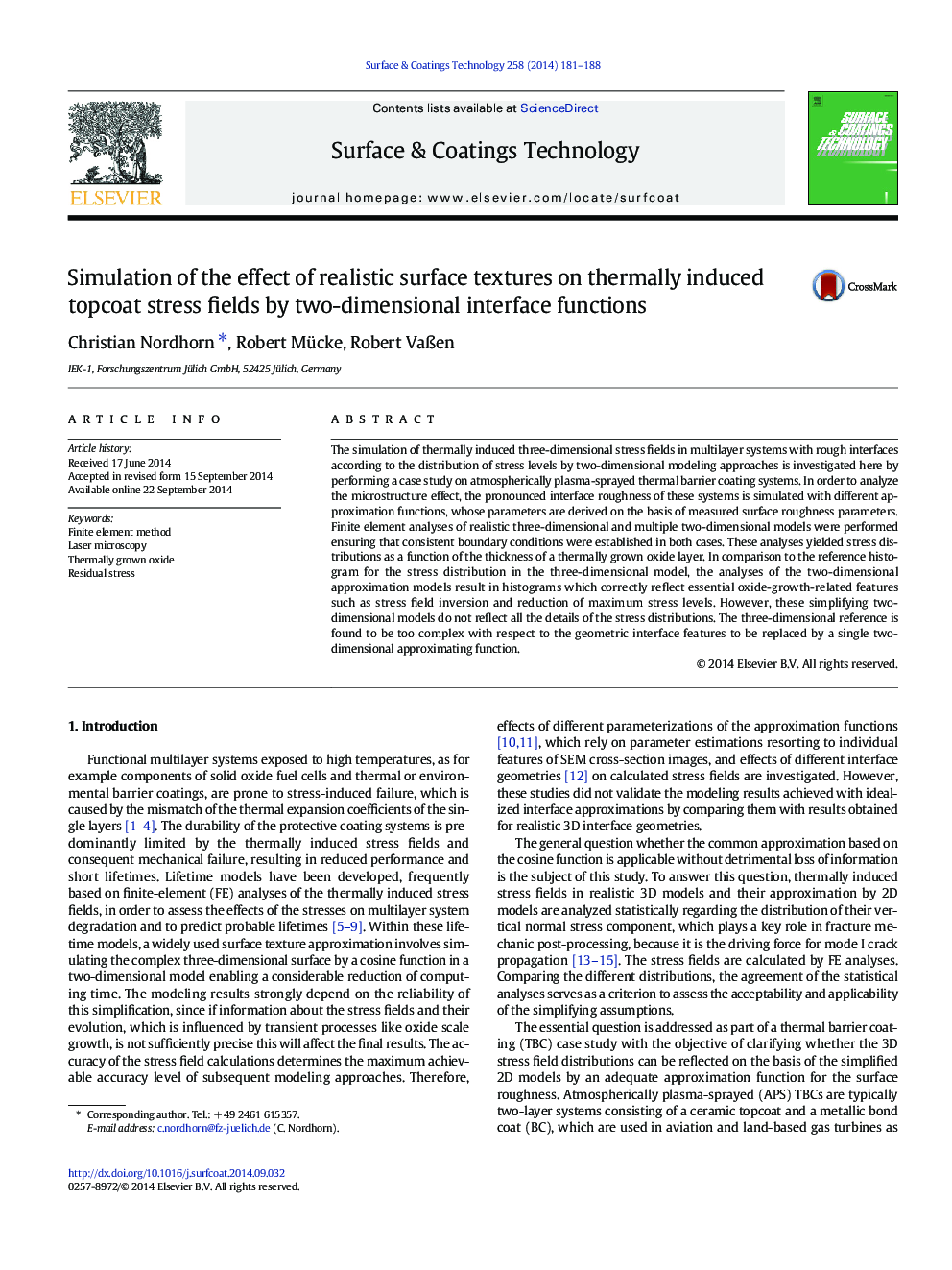| Article ID | Journal | Published Year | Pages | File Type |
|---|---|---|---|---|
| 8027209 | Surface and Coatings Technology | 2014 | 8 Pages |
Abstract
The simulation of thermally induced three-dimensional stress fields in multilayer systems with rough interfaces according to the distribution of stress levels by two-dimensional modeling approaches is investigated here by performing a case study on atmospherically plasma-sprayed thermal barrier coating systems. In order to analyze the microstructure effect, the pronounced interface roughness of these systems is simulated with different approximation functions, whose parameters are derived on the basis of measured surface roughness parameters. Finite element analyses of realistic three-dimensional and multiple two-dimensional models were performed ensuring that consistent boundary conditions were established in both cases. These analyses yielded stress distributions as a function of the thickness of a thermally grown oxide layer. In comparison to the reference histogram for the stress distribution in the three-dimensional model, the analyses of the two-dimensional approximation models result in histograms which correctly reflect essential oxide-growth-related features such as stress field inversion and reduction of maximum stress levels. However, these simplifying two-dimensional models do not reflect all the details of the stress distributions. The three-dimensional reference is found to be too complex with respect to the geometric interface features to be replaced by a single two-dimensional approximating function.
Related Topics
Physical Sciences and Engineering
Materials Science
Nanotechnology
Authors
Christian Nordhorn, Robert Mücke, Robert VaÃen,
